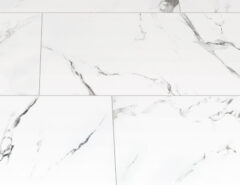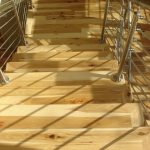A reader, Greg, brought up a very important issue yet to be discussed in this blog: Moisture. Dave is correct when he writes that moisture is the number one problem issue as relates to installed wood flooring. It is particularly necessary to stress this point when discussing Engineered flooring since this is what many turn to having discovered that solid hardwood is not appropriate for their application and/or environment. As often repeated here, Engineered flooring is designed to have greater dimensional stability than solids. This is true, however, it is not a cure all- far from it. Every brand and type of Engineered floor has a particular range of allowable temperature and moisture be it in the air (Relative Humidity) or subfloor (Moisture Content). The definition of Relative Humidity and Moisture Content according to the National Wood Flooring Association:
Relative Humidity: Ratio of the amount of water vapor present in the air would hold at saturation at the same temperature. It is usually considered on the basis of the weight of the vapor, but for accuracy should be considered on the basis of vapor pressures.
Moisture Content: the amount of moisture in wood expressed as a percentage of the weight of oven dried wood. National Oak Flooring Manufactures Association hardwood flooring is manufactured at 6 to 9 percent moisture content, with a 5 percent allowance for pieces up to 12 percent moisture content. Five percent of the flooring may be outside of this range.
National Wood Flooring Association “Technical Training Manual” 2007, Section V, p.5.
It is imperative that you refer to the installation manual and warranty papers provided by the manufacturer for the particular floor in question. Far too often, home owners and even installers carelessly over look this criteria. Worse, some assume that the temperature in their region is acceptable. For example, customers in Arizona often assume that due to the dry climate they couldn’t possibly have moisture issues. Remember, a moisture issue does not necessarily mean too much moisture. It can just as easily be too little. That said, though very dry on the surface, Arizona has a high water table with moisture sitting just below what appears to be excessively dry ground. As you can see, there are many variable to consider…it’s never safe to assume!

















